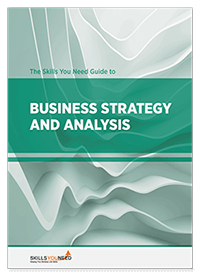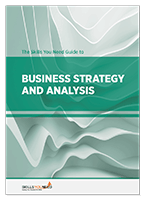Scenario Analysis
See also: Gathering Information for Competitive IntelligenceScenario analysis is a tool designed to help you to look at ‘alternative futures’. By thinking about what might happen if you took different courses of action, you can both make a better decision, and also manage the risks associated with your chosen course of action.
Scenario analysis can be used both at work and at home, although it is principally associated with business use.
Scenario analysis is particularly good for looking at ‘what could possibly go wrong’ and helping you to surface the fears associated with a course of action, from taking your business into a new venture to buying a new house. By articulating your worries, you can then assess whether they are realistic or not, and whether you are prepared to take the risk.
A Five-Step Process
Scenario analysis commonly uses a five-step process:
1. Identify the situation/problem that you are trying to address
The first step is to identify the problem or situation that you want to examine, as this defines the time period and the type of scenarios that you are likely to use.
For example, you might decide that you want to look at buying a new house with a bigger mortgage.
The mortgage period is probably 25 years, so you might want to look broadly at that period, but you can probably remortgage within a couple of years, so it may also make sense to look in more detail at the next five years.
2. Gather information to help your analysis
You need to think about what will affect your situation, and then gather as much information as possible about it. You might want to use tools like PESTLE analysis to make sure that you have gathered enough information.
In the mortgage example, you might want to look at economic trends over the last five to ten years, forecasts of future interest rates, your likely income and job prospects, and any big changes that you are planning in the next few years.
For example, are you thinking about a bigger house because you want to start and/or expand your family? This may affect your ability or desire to work and therefore your income.
Try to be precise in the information that you gather, and guess as little as possible.
3. Identify what you know, and what you (or others) have guessed
The next step is to separate certainties from uncertainties.
For example, you might decide that you want a fixed rate mortgage, as this will give you certainty, and also know that you are employed on a permanent contract.
You therefore know exactly how much the mortgage will cost you for the next few years, and also that your income is secure provided you are happy to remain with that employer, and nothing threatens you with redundancy. However, once your fixed rate period expires, all you can do is look at interest rate trends over the last five to ten years, and try to guess what will happen. You can also only guess what might affect your employer in the longer term.
Once you have identified what you know from what you have guessed, rank the uncertainties in order, with the biggest, most important ones at the top. It is up to you how you rank them, but you might consider ‘most uncertain’ or perhaps ‘most catastrophic’.
4. For each uncertainty, look at alternative outcomes
Starting with the most important, set out a reasonably good and a reasonably bad outcome from it, and develop a ‘story’ around it which links to all your certainties.
For example, on mortgage rates, your ‘good’ scenario might be that interest rates stay low in the medium term, and/or that you are able to find another fixed rate mortgage at a good rate. Your ‘poor’ outcome might be that global uncertainties push up interest rates, and you are forced to pay more, either fixed or variable rate, or even that you can’t get a fixed rate mortgage and have to pay variable rates for a period.
For each one, you can build in your salary assumptions, and look at how the scenario might develop.
This is the moment when you can really surface what you are afraid of, and how it might affect you in the future, as well as how likely the situation might be. Again, be as precise as possible in what might happen, and its effects, as this will enable you to plan better to manage the risks.
Warning! Keep the number of scenarios relatively small, as you will otherwise get hopelessly confused.
For example, in the mortgage example, you might decide that you want to build three broad scenarios around macroeconomic issues (global or national economic matters such as interest rates, recessions and the like), as these will have the biggest impact. You might, therefore, simply identify a good, neutral and bad scenario, and work out for each uncertainty what impact each scenario would have.
5. Start planning
Your final step is to look at your scenarios and think about what you would need to do to manage them.
In the mortgage example, you might think about how you could set aside extra money at the moment to protect you against future problems, or decide that your job security and reasonable salary means that you don’t need to worry too much because you can manage the likely level of interest rate increase.
Effectively, this is a risk management strategy, and you may find it useful to read our page on Risk Management for more about this. The page on Action Planning may also be helpful.
Further Reading from Skills You Need
The Skills You Need Guide to Business Strategy and Analysis
Based on our popular management and analysis content the Skills You Need Guide to Business Strategy and Analysis is a straightforward and practical guide to business analysis.
This eBook is designed to give you the skills to help you understand your business, your market and your competitors.
It will help you understand why business analysis is important for strategy—and then enable you to use analytical tools effectively to position your business.
Challenge your assumptions
Perhaps the most important point in all of this is to make sure that your analysis is based on evidence wherever possible. This means that you need to challenge any assumptions that you make: in each case, ask yourself why you think that, and what evidence you are basing it on.
As the financial advertisements constantly tell us, past performance is not necessarily a guide to future performance. It is, therefore, important that you think about risks carefully, and this is one tool that can help you to do so.


